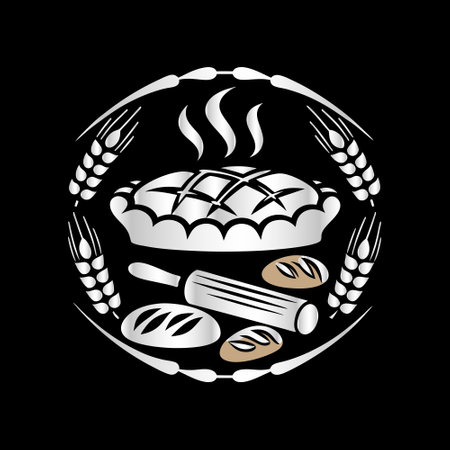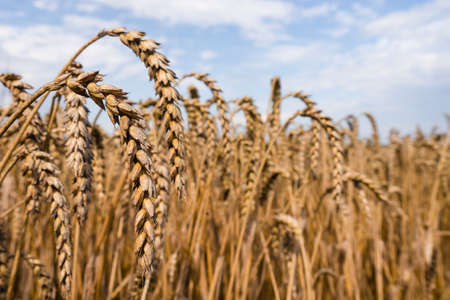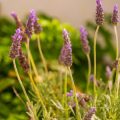Introduction to Foraging in the UK
Foraging has been an intrinsic part of life across England, Wales, and Scotland for centuries. From ancient woodlands to coastal hedgerows, the British Isles are a tapestry of diverse ecosystems that offer an abundance of wild edibles throughout the year. This longstanding tradition is woven into local culture, with generations passing down knowledge about seasonal harvests and safe identification. However, modern foragers must balance enthusiasm with responsibility: respecting local biodiversity is paramount to ensure that wild plants and fungi thrive for future generations. The UK’s unique “right to roam” laws—especially the Countryside and Rights of Way Act 2000—grant public access to much of the countryside, but these freedoms come with obligations. Foragers are encouraged to follow codes such as “leave no trace,” avoid overharvesting, and always seek landowner permission where required. Understanding both what nature offers and how to interact with it respectfully is key to enjoying the rich rewards of foraging across England, Wales, and Scotland.
2. Spring Foraging: Hedgerows and Woodland Delights
Spring is an exciting season for foragers across England, Wales, and Scotland. As the landscape awakens from winter’s rest, hedgerows and woodlands become abundant with edible treasures. Whether you’re a seasoned forager or just starting out, spring offers a variety of wild foods that are both delicious and easy to identify. Below, we explore some of the most popular finds—wild garlic, nettles, and early mushrooms—alongside tips on where to look and how to harvest responsibly.
Wild Garlic (Allium ursinum)
Wild garlic carpets damp woodlands from March to May, releasing a distinctive garlicky aroma that makes it easy to locate. The tender leaves are perfect for pestos, soups, or simply tossed into salads. When foraging, always avoid picking near roadsides due to pollution, and ensure you do not mistake the leaves for poisonous plants such as lily of the valley.
Nettles (Urtica dioica)
Nettles are often found along riverbanks, woodland edges, and in meadows. Harvest young shoots with gloves to avoid stings; once cooked or dried, the sting disappears. Nettles are rich in iron and make a fantastic addition to soups and teas. Always pick away from areas where dogs may roam or where pesticides could have been used.
Early Mushrooms
Spring brings the first flush of wild mushrooms like St George’s mushroom (Calocybe gambosa) and morels (Morchella spp.). These can be found on grassy verges or in open woodlands. It’s crucial to be absolutely certain of your identification before consuming any wild mushrooms—if in doubt, consult an experienced local forager or join a guided walk.
Key Spring Wild Edibles at a Glance
| Edible Plant | Typical Habitat | Harvest Time | Notes |
|---|---|---|---|
| Wild Garlic | Damp woodlands | March – May | Avoid lookalikes; aromatic leaves |
| Nettles | Woodland edges, meadows | March – June | Pick young shoots with gloves |
| St George’s Mushroom | Grassy verges | April – May | Mild flavour; check identification carefully |
| Morels | Open woods, disturbed soil | April – May | Sought-after delicacy; tricky to find |
Best Practices for Responsible Foraging
– Always seek permission when foraging on private land.
– Never strip an area bare; take only what you need.
– Use a field guide or app suited to UK flora.
– Leave no trace and respect wildlife habitats.
– Be mindful of protected species and local by-laws.
By following these guidelines and focusing on well-known spring edibles, you can safely enjoy the bounty of the British countryside while helping to preserve its delicate ecosystems for future generations.

3. Summer Bounty: Meadows, Fields, and Coastal Finds
As summer unfurls across England, Wales, and Scotland, the countryside bursts with a wealth of wild foods ready for foraging. This is the season when meadows shimmer with edible flowers, hedgerows are heavy with berries, and coastal fringes offer unique marine treasures. Knowing what to look for and how to gather responsibly ensures a rewarding foraging experience that respects both nature and tradition.
Bountiful Berries in Hedgerows
Summer is synonymous with berries in the UK. Blackberries begin to ripen from late July onwards, sprawling through brambles along country lanes and woodland edges. Wild raspberries and gooseberries can be found in more secluded spots, while elderberries start to appear by the end of August. When picking, choose plump, fully coloured fruit and avoid any near busy roads to reduce exposure to pollutants.
Edible Flowers: Colourful Gems of the Meadows
Meadows are dotted with edible blooms such as elderflowers (early summer), meadowsweet, and wild roses. These fragrant flowers can be used fresh in salads or infused into syrups and cordials. Always pick sparingly to ensure plants continue to thrive and leave some blossoms for pollinators.
Coastal Delights: Seaweeds and Samphire
The UKs coastline offers a different kind of summer bounty. Seaweeds like dulse, laver, and bladderwrack are abundant at low tide—especially in Wales and western Scotland. Look for vibrant, undamaged fronds attached to rocks. Marsh samphire is another sought-after find; its crisp, salty stems are perfect for salads or quick pickling. Foraging on the coast requires care: always check tide times, forage well away from polluted areas, and harvest only what you need.
Forager’s Tips for Summer
Use a field guide or reliable app for identification—never eat anything unless you are certain it’s safe. Bring containers or baskets that allow air flow to keep your finds fresh. Respect private land by seeking permission before entering fields or woodlands. Most importantly, take only what you’ll use and leave enough behind for wildlife and regeneration.
This vibrant season offers an inspiring connection to the UK’s natural abundance—a reminder that careful observation, patience, and respect are at the heart of successful foraging.
4. Autumn Harvest: Fungi, Nuts, and Hedgerow Fruits
As the leaves turn and the air grows crisp across England, Wales, and Scotland, autumn welcomes a true abundance for the keen forager. This season is marked by the emergence of edible mushrooms in ancient woodlands, a glut of nuts carpeting parklands, and vibrant hedgerows brimming with fruits that are as traditional as they are delicious. Below is a guide to some of the most rewarding finds during autumn, along with essential advice to ensure safe and responsible foraging.
Key Autumnal Edibles
| Forage Item | Where to Find | When to Harvest |
|---|---|---|
| Edible Mushrooms (e.g., chanterelle, penny bun) | Woodland floors, especially beneath oak, beech, and pine | September to November |
| Sweet Chestnuts | Mature chestnut groves and parkland trees | October to early November |
| Sloes (blackthorn berries) | Hedgerows and field boundaries | Late September to November (best after first frost) |
| Rosehips | Wild rose bushes in hedgerows and verges | October to December |
Edible Mushrooms: A Forager’s Treasure
The UK’s woods are a haven for mushroom enthusiasts in autumn. Chanterelles and penny buns are highly prized both for their flavour and relative safety—provided they are correctly identified. Always consult a reliable field guide or join an organised foray led by experts; some poisonous varieties closely resemble edible ones. Never consume any mushroom unless you are 100% certain of its identity.
Nuts: Chestnuts on the Forest Floor
Sweeping up sweet chestnuts from beneath ancient trees is a classic British autumn activity. Unlike conkers from horse chestnut trees—which are toxic—sweet chestnuts can be roasted or used in seasonal recipes. Wear gloves when collecting as their spiky husks can be tricky to handle.
Hedgerow Bounty: Sloes and Rosehips
Sloes, the small dark fruit of the blackthorn bush, are famously steeped in gin to create sloe gin—a cherished winter tipple across Britain. Pick after the first frost for best flavour. Rosehips, meanwhile, are packed with vitamin C and have been used historically for syrups and jellies since wartime rationing days.
Safe Foraging Advice
- Always seek landowner permission if you’re not on public land.
- Avoid harvesting rare or protected species—leave enough for wildlife.
- Use guides tailored to British flora; avoid North American sources which may reference different species.
- If in doubt about identification—especially with fungi—do not eat it.
This mindful approach ensures that autumnal foraging remains safe, sustainable, and deeply rewarding as part of Britain’s rural traditions.
5. Winter Foraging: Roots and Persistent Greens
As the chill of winter settles over England, Wales, and Scotland, many assume that wild foraging opportunities are scant. Yet, the colder months offer a surprising array of resilient greens and robust roots for those willing to brave the elements. The key lies in knowing where to look and what to seek out among frosted hedgerows and woodland edges.
Resilient Wild Greens
Even in the depths of winter, certain hardy greens persist. Nettles (Urtica dioica), though less lush than in spring, can still be found in sheltered spots; a quick blanch removes their sting, making them ideal for soups or wilted greens. Jack-by-the-hedge (Alliaria petiolata), known for its mild garlic flavour, is another reliable find near woodland paths. Dandelion leaves, while more bitter in winter, can add a peppery note to salads when used sparingly.
Digging for Roots
The damp earth yields nourishing roots such as wild parsnip, burdock, and alexanders. These require a sturdy digging stick or trowel, but the effort is rewarded with ingredients that form the backbone of many traditional British stews and broths. Roasted burdock root is reminiscent of artichoke, while alexanders’ roots lend a celery-like aroma to warming winter dishes.
Berries and Hips That Linger
Winter’s larder also includes persistent fruits like rosehips and the last of the sloes. Rosehips, abundant in hedgerows across all three nations, are packed with vitamin C and were historically brewed into syrups during wartime rationing. Sloes can still be collected after frost has softened their tartness—perfect for infusing gin or making preserves.
Traditional Uses in UK Cuisine
For centuries, these wild edibles have featured in rural British cookery. Nettles are blended into hearty nettle soup or added to leek-and-potato potages. Burdock root finds its way into savoury pies or as a roasted side dish alongside game meats. Rosehip syrup is drizzled over porridge or stirred into hot drinks for a bright tang on cold mornings. These recipes not only warm the body but also connect us to generations of resourceful cooks who made use of every seasonal gift from the land.
The winter landscape may seem stark at first glance, but with careful observation and respect for sustainable harvesting, foragers can continue to enjoy nature’s bounty throughout the darkest months across England, Wales, and Scotland.
6. Ethical and Sustainable Foraging Practices
Foraging Responsibly in the UK
Foraging in England, Wales, and Scotland is a rewarding way to connect with nature, but it comes with a responsibility to protect the environment for future generations. Practising ethical and sustainable foraging ensures that wild food sources remain abundant and healthy, supporting both biodiversity and local ecosystems.
Best Practices for Sustainable Foraging
- Harvest Sparingly: Take only what you need, leaving enough behind for wildlife and natural regeneration. A good rule of thumb is to pick no more than one third of any patch.
- Use Proper Identification: Misidentification can harm both you and the ecosystem. Always double-check plant species before harvesting, using reputable field guides or local experts.
- Avoid Damaging Roots: When picking plants like wild garlic or ramps, take leaves rather than uprooting entire plants to ensure continued growth in subsequent seasons.
Understanding Local Restrictions and By-Laws
The legal framework for foraging varies across the UK. In general, it is legal to forage for personal use on public land and public rights of way, but there are notable exceptions:
- Protected Areas: National Nature Reserves, Sites of Special Scientific Interest (SSSIs), and some parks may prohibit or restrict foraging to conserve sensitive habitats.
- Private Land: Always seek the landowner’s permission before foraging on private property.
- Endangered Species: Never collect protected plants or fungi listed under UK law. Consult resources such as the Wildlife and Countryside Act 1981 for guidance.
Contributing to Conservation
Sustainable foraging goes hand-in-hand with conservation efforts. Share your knowledge with others, participate in local habitat restoration projects, and report sightings of invasive species that threaten native flora. By following these practices, you help preserve Britain’s natural heritage while enjoying its seasonal bounty.


